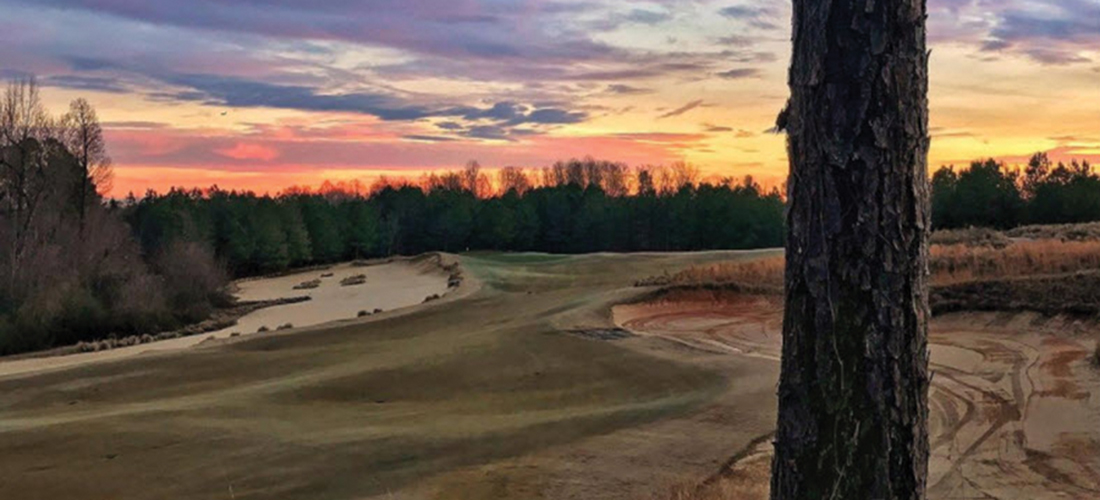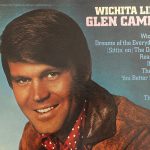
By Lee Pace
It’s the banana ball that balloons into the wind and is funneled into the hinterlands to the right. It’s the duck hook that runs like a scalded dog into the woods left. It’s that bladed wedge that flies into the weeds and dark catacombs beyond the green.
A bad shot at Tobacco Road Golf Club provides opportunity. For Martha Hudson with her trusty iPhone camera, the possibilities are endless.
“Most of the really interesting angles that I find usually happen when I’m playing and I’ve hit a really horrendous shot, or I’m helping someone look for a ball,” says Hudson, a golf staff member at Tobacco Road who manages the course’s social media platforms.
Over the last six years, Hudson has learned to work with dexterity, documenting the skies, shadows and seasons of a course designed by Mike Strantz in 1998 and carved from a sand pit 30 miles north of the village of Pinehurst. Showcased at various times on the club’s Instagram account, which numbers more than 26,000 followers, are the mottled grasses and dramatic hillocks around the blind-shot 13th green; the mammoth mounds bordering the pathway of the tee shot on the first hole; the weathered railroad ties up to the ninth tee, or others providing access to bunkers around the course. There are misty mornings, full moons at dusk, and the ecrus of dormant grass in the winter.
“For me, it’s capturing all of what makes this golf course so unique,” she says. “The features, the green shapes, the undulations, the light at different times of day and different seasons. I wasn’t here when the course was built, but the guys who were here talk about how Mike saw everything as art. That artwork has matured over 20 years. That’s what I try to capture.”
Tobacco Road is one of the Sandhills area’s most distinctive golf courses. It’s appropriate then that the club has one of the most cutting-edge social media presences, particularly on Instagram, the medium of choice for millennial and Generation Z golfers looking for eye candy and interaction with their fellows. It can hardly rival the reach of Pinehurst Resort and Country Club with its 68,000-plus Instagram followers and a worldwide presence via more than a century of existence and its position as a U.S. Open “anchor site,” but Tobacco Road dwarfs every other golf venue in the area.
Hudson, a former collegiate golfer at the University of Alabama-Birmingham and an English major, melds her love of golf — “the Game,” as she refers to it online — a one-of-a-kind golf course, her vocabulary and her camera, into an eclectic mix of images and pithy descriptions.
“I have a concentration in creative writing, so the storytelling aspect of doing the marketing at such a unique place is fulfilling on a creative level for me,” she says. “Tobacco Road is truly a special place, and people are reliving experiences digitally, whether it’s going through their own photos or Instagram or whatever social media platforms they’re on. You get their attention, and then they’ll dig into whatever story you want to tell. A lot of golf courses never take advantage of the opportunity. It’s free. All it takes is effort, a little time and some creativity.”
A mid-1990s golf trip to Myrtle Beach by two Sanford friends and businessmen sparked the idea for Tobacco Road. Mark Stewart was president of Lee Concrete Co., and Tony Woodell was vice president of construction, and their company owned more than 200 acres of old rock and sand quarries on a tobacco and soybean farm just off U.S. 15-501 south of Sanford. The proliferation of courses in the 1990s golf boom prompted them to wonder if a daily fee course located between the population-dense Triangle area and the international golf mecca of the Sandhills might work. They investigated the concept and were led to Strantz, a former Tom Fazio protégé who had recently completed excellent work at Caledonia and True Blue near Pawley’s Island, South Carolina.
Before his death from cancer in 2005, Strantz bequeathed to the mid-Atlantic region a half-dozen dynamic new golf courses. His firm was named Maverick Golf Design for excellent reasons. The architect worked on one course at a time and set up living quarters at the venue. He stood 6-foot-5 and sported shoulder-length hair and a mustache. He rode a horse around the property and made intricate sketches of every hole, then turned the drawings over to his shapers. He would be covered in dirt after working the equipment all day or in paint after marking the lines of the various layers of the course — fairways, fescue rough, love grass, areas to be left in their natural sandy state. Part of the club’s logo is a deer skull that Strantz found while building the course.
“I remember his passion most of all,” says Joe Gay, the club’s original director of golf, who retired in 2015. “He was so enthusiastic about everything. He was excited all the time. We feel blessed Mike provided us with this golf course before he passed away.”
Today the course is ranked No. 49 on Golf Digest’s list of America’s 100 Greatest Public Courses and No. 35 on Golf magazine’s Top 100 Courses You Can Play. The course closed for two months in the summer of 2014 to convert its greens to MiniVerde Bermudagrass.
“It is so visually stunning, and the images just get seared in your mind at certain places, and it just makes you want more,” Hudson says. “You want to understand more of the golf course and why Mike did that or maybe how you could have played it differently.”
Hudson grew up in Black Mountain, just east of Asheville, and played golf in high school in the early 2000s before moving on to UAB. She was working at a daily fee course in Birmingham in January 2015 when she was hired at Tobacco Road. Gay retired later that year, Chris Brown moved up from head professional to director of golf, and Hudson was given more responsibilities, including managing the social media platforms. The course’s Instagram account had under 500 followers at the time.
“Martha has done a great job,” Brown says. “Some people are good with the photos, some with the words. She’s skilled at both. Add to that the fact that everybody has a mobile TV studio in their back pocket. The younger audiences are coming through the door, the guys attracted by Bar Stool and places like that. People get information today through so many different sources. I’m 53. I don’t have to understand it or always agree with it, but I know it works.” PS
Chapel Hill-based writer Lee Pace has written about golf in the Sandhills since the late 1980s and has authored a dozen books about clubs, courses and the people who made it special. Write him at leepace7@gmail.com and follow him @LeePaceTweet.





